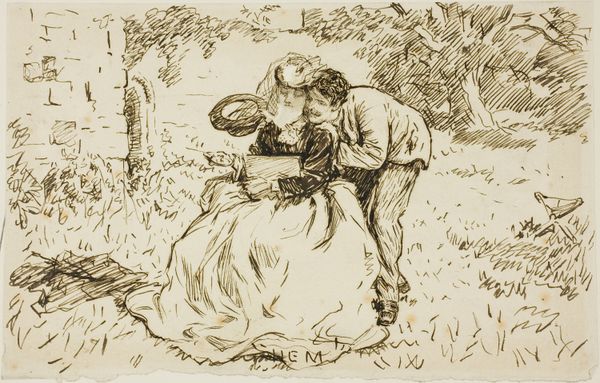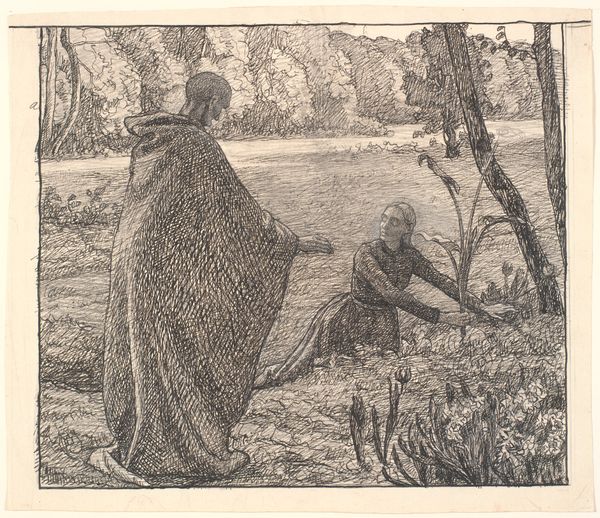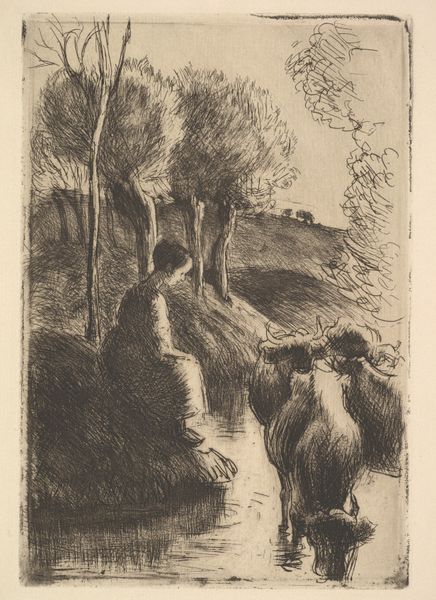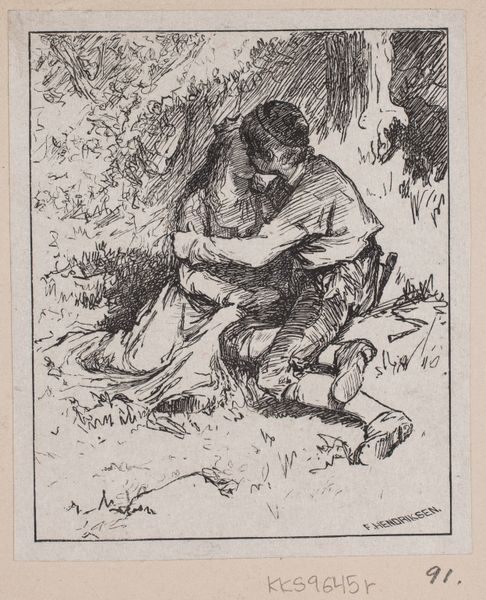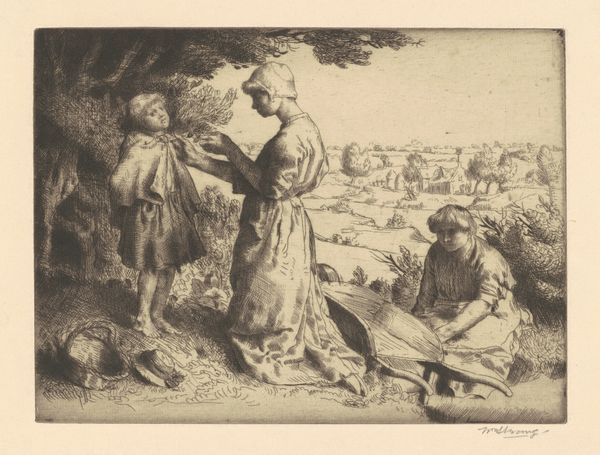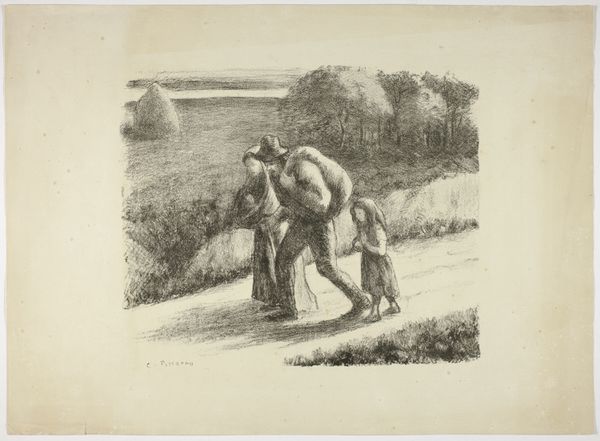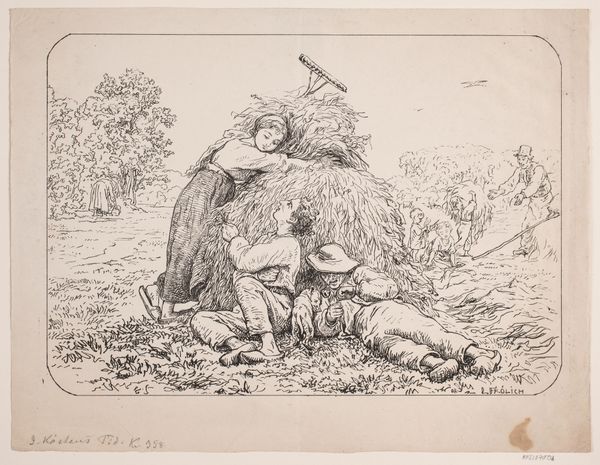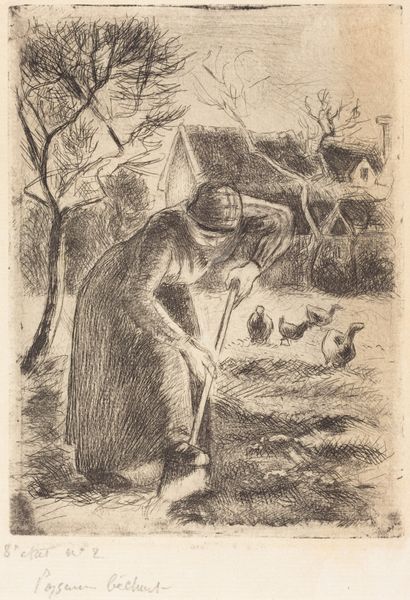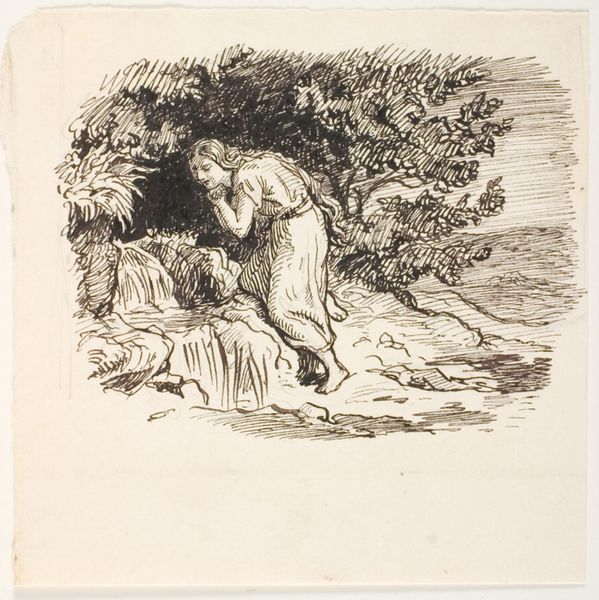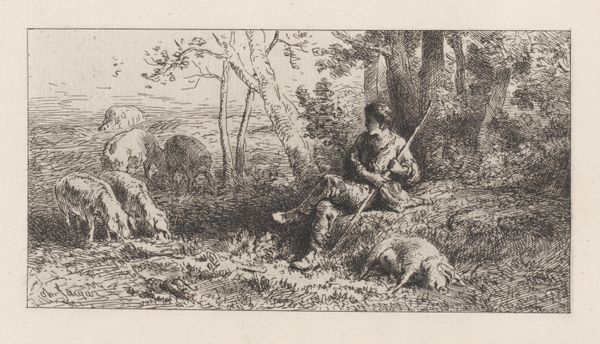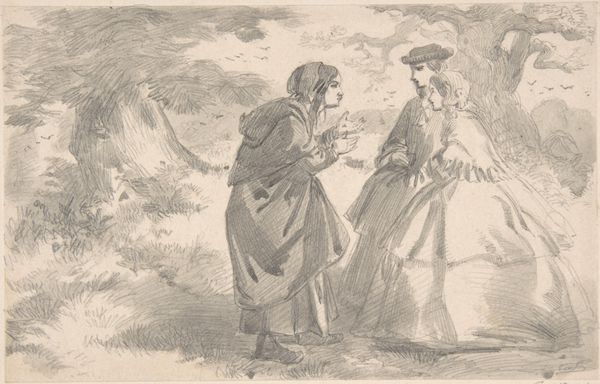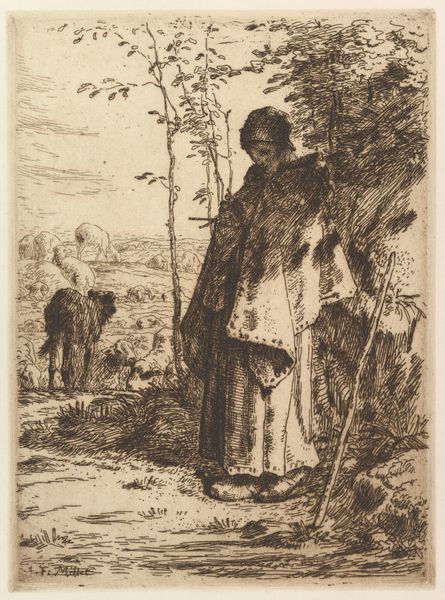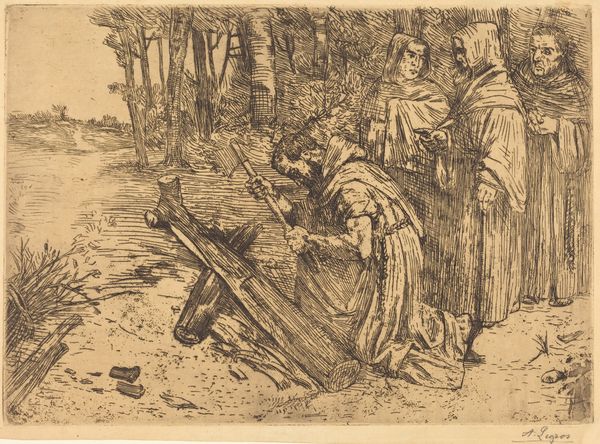
drawing, print, pencil
#
drawing
# print
#
pen sketch
#
pencil sketch
#
landscape
#
figuration
#
pencil
#
genre-painting
Dimensions: Sheet: 5 5/16 × 7 3/16 in. (13.5 × 18.3 cm) Plate: 2 9/16 × 3 5/8 in. (6.5 × 9.3 cm)
Copyright: Public Domain
Editor: This is Charles Jacque’s “Grazing Cow,” created sometime between 1860 and 1870. It’s a drawing or print, seemingly done in pencil and pen. It feels like a very humble scene, a woman leading a cow, almost lost within the sketched landscape. What stands out to you in this piece? Curator: What strikes me is the overt depiction of labor. Consider the process: the artist painstakingly rendered this scene with humble materials – pencil, pen, and paper readily available during the mid-19th century. The image itself depicts the labor involved in animal husbandry. Note how Jacque foregrounds the physical act of tending livestock, reminding us of the material reality underpinning pastoral romanticism. Editor: So you’re saying it's less about a pretty picture of the countryside, and more about...the work *behind* that picture? Curator: Precisely. We have to think about *how* this image was made, and *what* is being depicted. Consider the rise of industrialization at the time, with many artists returning to simpler subject matters. The work engages in a subtle critique, highlighting the value and, perhaps, the precarity, of rural labor amidst larger socio-economic shifts. Editor: That’s fascinating! I initially just saw a simple pastoral scene, but thinking about the materials and the labor…it really reframes the whole thing. It makes you appreciate the artistic skill and the actual work depicted so much more. Curator: Indeed, by focusing on materiality and social context, we reveal a far richer meaning in what might at first glance seem like a simple landscape drawing.
Comments
No comments
Be the first to comment and join the conversation on the ultimate creative platform.
